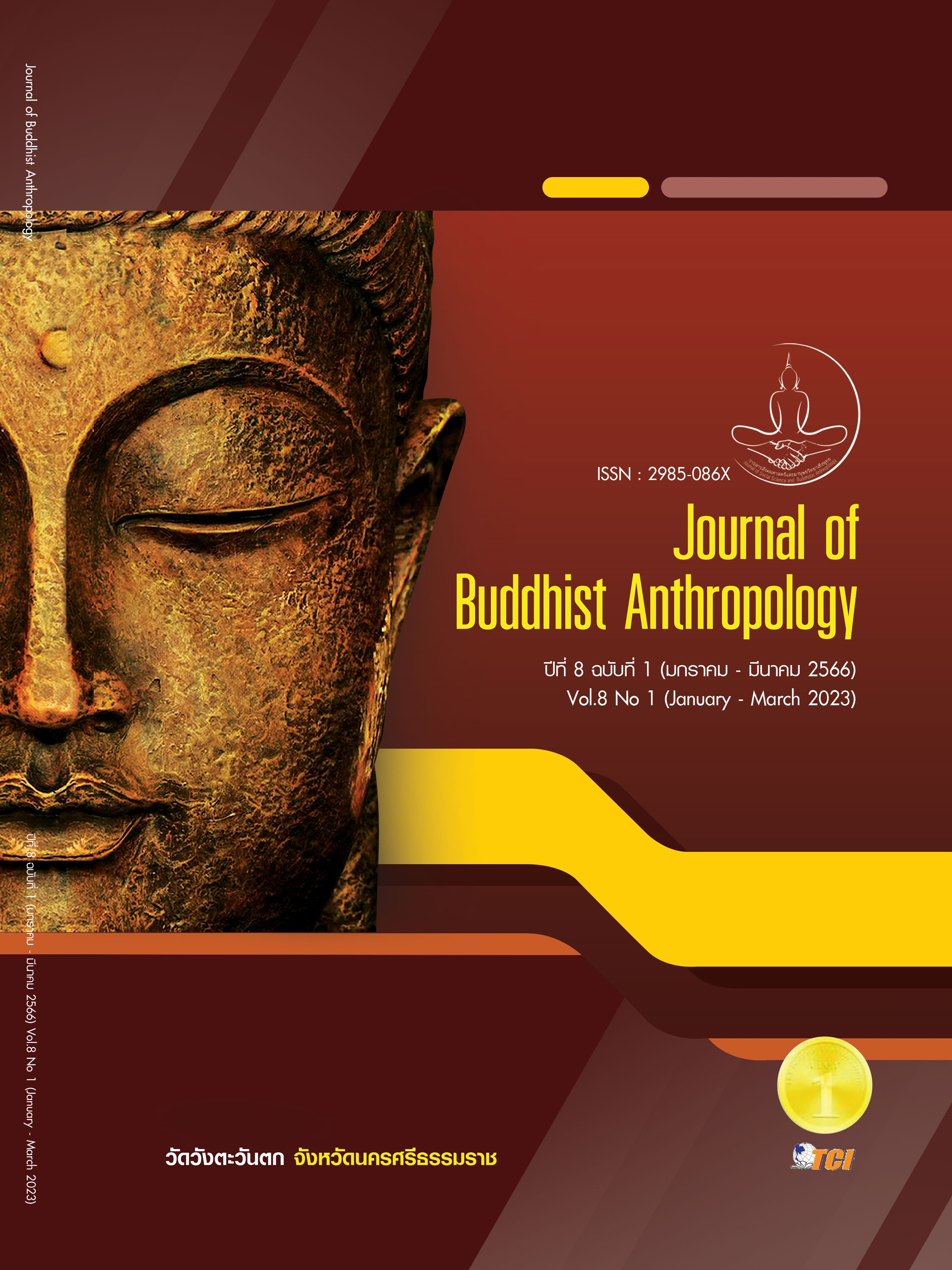THE DEVELOPMENT OF COMMUNICATIVE ENGLISH FOR CULTURAL AND SPIRITUAL TOURISM AT THE BUDDHIST PARK, PHETCHABUN PROVINCE
Keywords:
English for Communication, Cultural and Spiritual Tourism, Front Officers, Buddhist Park, Phetchabun ProvinceAbstract
Background and Objective: A study of Communicative English for Cultural and Spiritual Tourism of Phra Buddha Maha Dhammaraja at the Buddhist Park, Phetchabun Province, aimed to develop the use of English for communication in cultural and spiritual tourism among front officers who with both native and non-native speakers at the Buddhist Park, Phetchabun Province. To achieve this objective, the study was divided into three parts as follows: Firstly, collecting data through in-depth individual interviews; secondly, dividing an informal focus group into three groups, and thirdly, observing and discussing with on-duty officers using open-ended questionnaires.
Methodology: This study's sample consisted of twenty-two front officers employed by the Phra Buddha Maha Dhammaraja Foundation at the Buddhist Park in Phetchabun Province. There were three groups of front officers, first, security guards and gardeners, second, maids and administration officers, and third, garland and fish food vendors.
Main Results: The results of the research indicated that the most significant challenges for front officers were the following: A lack of basic English language communication ability with both native and non-native speakers; an inability to communicate fluently and correctly with terms and expressions related to cultural and spiritual tourism; and inadequate training that they communicated with foreigners in their mother tongue rather than in English. These challenges applied to all five groups of operatives: Administration officers, security officers, security guards, and security guards. Thus, the research article aimed to categorize and analyze the use of the English language by front officers in a cultural and spiritual tourism setting at the Buddhist Park in Phetchabun Province. The study aimed to examine patterns of English language functions used by both native and non-native speakers, to better understand how English was utilized in this particular context. The study found that the use of the English language by front officers at the Buddhist Park in Phetchabun Province could be categorized into three distinct sections. The first section was English usage for garland and fish food vendors who were involved in selling and buying garlands and fish food. The second section was English usage for gardeners and security guards who were involved in asking and answering directions. Lastly, the third section was English usage for maids and administration officers who were involved in selling and buying Buddha images.
Involvement in Buddhadhamma: After the ASEAN Community was established in 2015, large numbers of people traveled around the world, and the ASEAN member countries were one of the more popular tourist targets. Phetchabun Province became one of these destinations because its landscape was known as the "Switzerland of Thailand" due to its tranquility, serenity, and breathtaking vistas. In addition, international travelers were a rapidly aging society, and the elderly were extremely interested in cultural tourism, live longer and healthier lives, and were able to travel across continents. The English language was used in a cultural and spiritual setting to convey both travel and Buddhism. Local people often acted as mediators, linking the history and culture of the area to tourists using the English language. At the Buddhist Park in Phetchabun Province, the front officers who were on duty played an important role in connecting the knowledge and beliefs of Buddhism with the English language.
Conclusions: Based on the evidence gathered through individual interviews, a focus group, and observation of the front officers on duty, it was obvious that 1) There were three groups of the English language to develop for the front officers at the Buddhist Park: English for selling and buying garlands and fish food, English for selling and buying sacred objects of the Foundation, and English for asking and responding to directions in front of and around the Buddhist Park; 2) There were two models of front officers attempting to communicate with foreign travelers in English through the use of gestures, signals, or even broken English while their vocabularies were limited and they responded with inappropriate language. In addition, these two findings would provide the front officers with knowledge of English language usage in order to enhance their English language skills.
References
Abuarqoub, I. (2019). Language Barriers to Effective Communication. Utopia y Praxis Latinoamericana. 24(6), 64-77.
Caros, M. (2022). Cultural, Religious, and Spiritual Tourism Attractiveness Among Youngsters. Catus Tourism Journal. 4(2), 70-83.
Gilakjani, A. P. & Sabouri, N. B. (2016). How can EFL teachers help EFL learners improve their English pronunciation?. Journal of Language Teaching and Research. 7(5), 967-972.
Mili, N. (2012). Rural tourism development: An overview of tourism in the Tipam Phakey village of Naharkatia in Dibrugarh District, Assam (India). International Journal of Scientific and Research Publications. 2(12), 1-3.
Nishimura, M. (2020). ASEAN Tourism Policy and Tourism Development in the Southern Part of the Lao PDR. 早稲田大学大学院文学研究科紀要. 65, 537-555.
Piriyasilp, Y. (2014). English Language Needs of Tourism Industries in Khon Kaen Province. Journal of Thai Hospitality and Tourism. 9(2), 16-30.
Singsomboon, T. (2014). Tourism promotion and the use of local wisdom through creative tourism process. International journal of business tourism and applied sciences. 2(2), 32-37.
UNWTO. (2015). Tourism Highlights 2015 Edition. UNWTO World Tourism Organization. June 2015, 1-15. https://doi.org/10.18111/9789284416899.
UNWTO. (2019). UNWTO World Tourism Barometer and Statistical ANNEX. UNWTO World Tourism Organization. 17(2). https://doi.org/10.18111/wtobarometereng.
Downloads
Published
How to Cite
Issue
Section
License
Copyright (c) 2023 Journal of Social Science and Buddhistic Anthropology

This work is licensed under a Creative Commons Attribution-NonCommercial-NoDerivatives 4.0 International License.








